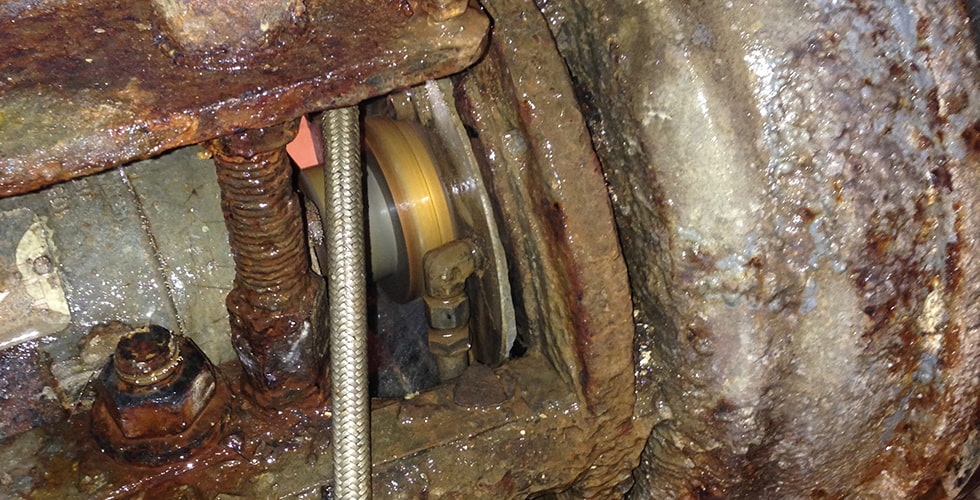
Slurry pumps are commonly used in the mining industry to transport abrasive and corrosive slurries throughout the mining process. Due to the harsh nature of these processes, slurry pumps are prone to leakage and failure, which can lead to high maintenance costs. Pump operators tend to focus their preventive maintenance efforts on the wet end of a pump (casing, impellers, etc.) because this is where most wear parts are located.
However, frequent leakage within slurry pumps and the wet environment created by flush water causes challenges for the bearing assembly, which can lead to substantial, avoidable maintenance costs. This article will discuss taking a proactive approach to effectively sealing slurry pump bearing assemblies and highlight the pros and cons of the most common types of bearing seals.
The Importance of Effective Sealing
To begin, it is important to understand why effective sealing and lubrication retention for bearings is so critical. Often, bearing manufacturers reference the fatigue life of a bearing. The rating life L10 is the fatigue life 90% of a sufficiently large group of identical bearings operating under identical conditions can be expected to attain or exceed.1 However, according to one bearing manufacturer, only 10% of rolling element bearings will ever reach their L10 life, and this number is much lower for slurry pumps due to the challenging nature of the application. Research around failure analysis of bearings shows contamination and poor lubrication account for up to 60% to 70% of all bearing failures. Even as little as a .002% ingress of water into the bearing housing can reduce bearing life by approximately 50%. Reconciling these facts with the characteristics of the slurry pump application explains why premature bearing failure is common.
Types of Bearing Seals
The bearing assembly is located only a few inches from the shaft seal. If that seal is leaking or flushed with water, the wet, abrasive material will travel along the shaft until it reaches the bearing seal. What happens next will depend on the type of seal used to protect those bearings.
The most frequently used bearing seal is a lip seal because it is inexpensive and readily available for purchase. It can be an effective short-term solution, but is prone to wear and tear over time, particularly when exposed to abrasive slurries. The gritty slurry is trapped underneath the lip of the seal and erodes the material, creating a gap for contaminants to easily enter the bearing frame. This will quickly degrade the quality of lubrication and cut grooves in the shaft or shaft sleeve, which eventually will need to be replaced.
Another commonly found sealing solution is an OEM-provided labyrinth seal. These seals rely on a close tolerance to the shaft which provides a direct leak path for contaminants to get into the housing. It is adequate for retaining grease lubrication but provides little resistance to any outside contamination ingress.
The obvious costs associated with these repairs include replacement parts (bearings, shafts, covers, etc.), but there are numerous other costs often not considered. These include the hours spent in the maintenance shop removing and reassembling pumps, the hours spent greasing bearings that are constantly leaking through poor seals, vibration analysis, lost production and unplanned downtime. Even a few hours of downtime in a facility can cost hundreds of thousands of dollars.
Additionally, supply chain issues affecting OEMs and parts suppliers place even more importance on the reliability and availability of the equipment. Basic day-to-day repairs on relatively inexpensive parts can cause large delays to bringing equipment back online.
Sealing Solution
In order to avoid costly repairs and parts replacement due to poor bearing sealing, companies can take a proactive step and install a bearing isolator. Bearing isolators are noncontacting designs that consist of a unitized stator and rotor to form a compound labyrinth seal, ensuring permanent bearing protection against lubrication loss and contamination ingress. Because they are noncontact designs with no wearing parts, these seals last the lifetime of the equipment and are easily retrofitted from lip seal orientations.
Some bearing isolators are designed specifically for the harsh environments and challenges of the slurry world. Large internal chambers and rotors prevent contaminants from entering seals. Since the seals do not rely on contact with the shaft to create the sealing interface, there is no wear to the shaft or shaft sleeve if present. Unitizing rings ensure the rotor and stator stay together in extreme conditions and oversized D grooves can help in grease or oil-lubricated environments. These designs help keep contaminants from entering the bearing housing—even under heavy, direct spray.
Recently, a maintenance crew at a potash mine was experiencing consistent leakage and high failure rates in the bearing assemblies, requiring a minimum of three replacements per year. This resulted in approximately eight hours of lost production each time. After retrofitting bearing isolators onto frames that previously used OEM labyrinth seals, the crew estimated an annual savings of $160,000 and a return on the investment after only 11 days.
Installing a permanent, effective bearing sealing solution on slurry pumps can increase equipment reliability and cut down on replacement costs, helping mining companies meet their financial and operational targets.
References
SKF. Bearing Rating Life. skf.com/us/products/rolling-bearings/principles-of-rolling-bearing-selection/bearing-selection-process/bearing-size/size-selection-based-on-rating-life/bearing-rating-life


